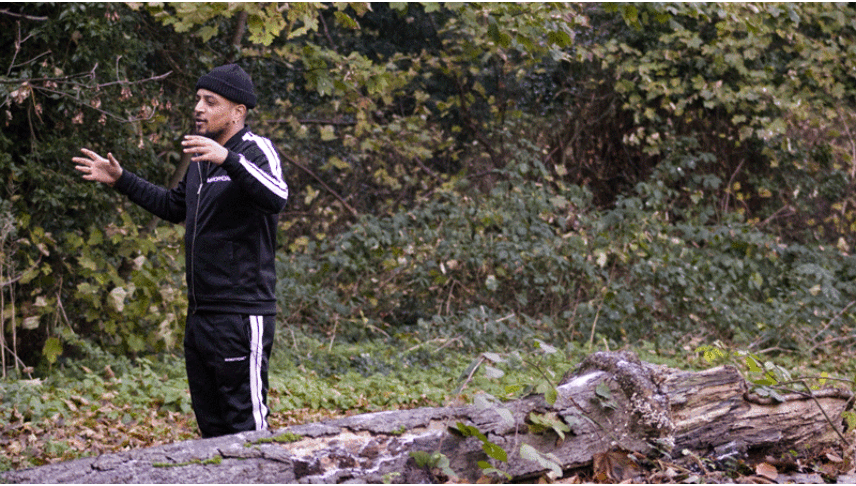Register for free and continue reading
Join our growing army of changemakers and get unlimited access to our premium content

Image: The Wildlife Trusts
The Trusts, which comprise more than 45 charities, have today (15 February) confirmed that the new organisers have started in post, thanks to £5m in funding from the National Lottery Heritage fund. The funding was confirmed last summer, as part of a £22m funding round help to mark Queen Elizabeth II’s Platinum Jubilee.
The ‘Nextdoor Nature’ initiative’s organisers are tasked with spearheading local projects to help improve access to green spaces and to boost biodiversity.
According to the Trusts, more than four in ten people in the UK do not live within five minutes’ walk of a green space, with those experiencing poverty and those from minority ethnic backgrounds less likely to have good access to green spaces. 85% of these people say that better access to nature would improve their quality of life.
The UK Government has committed to a new target for all residents in England to live within 15 minutes’ walk of a green or a blue space.
Projects in the works from the Wildlife Trusts include the creation of community gardens; improving accessibility and biodiversity on walking trails and planting ‘pollinator corridors’ of plants that attract bees, beetles, moths and butterflies.
There will also be projects entailing the rewilding of green spaces at places of worship in three counties, spanning from Surrey in the southeast and Cornwall in the southwest to Nottinghamshire in the east midlands. Rewilding involves minimising human intervention on a green space, enabling it to return to its natural, uncultivated state. This can boost soil quality and biodiversity.
Additionally planned are projects to improve skills and bring communities together. There are community art and nature projects planned for four counties (Nottinghamshire, Lancashire, Suffolk and Radnorshire), plus cross-generational nature groups being created in a further four (Derby, Dorset and Sussex) as well as London and Teesside.
In a similar vein, there are also projects in the works designed to empower those from vulnerable socio-economic groups to contribute to nature’s recovery in their local area. These initiatives are in the works for Kent, Gloucestershire, Derbyshire, Yorkshire, Wiltshire and Northumberland.
For example, at Derbyshire’s Hadhari Centre, which supports older people from African and Caribbean communities, the Wildlife Trusts is co-creating a new vegetable garden that day centre users can access. Vegetables grown there will be incorporated into meals served at the Centre’s luncheon club.
For many of the projects, the Wildlife Trusts and its team of community organisers will be working with established local organisations, like the Hadhari Centre. Local branches of the Trusts are engaging with councils, museums, colleges and universities, other charities, youth groups and places of worship.
“Nextdoor Nature focuses on responding to communities’ needs for improving nature where they live, and the variety of work undertaken shows the many different ways people can help wildlife,” said The Wildlife Trusts’ director of campaigning and communities Nikki Williams.
“This work is making a real difference for nature and communities around the UK and we hope it will inspire many more people to make meaningful changes in their own neighbourhoods.”
Last month, the UK’s post-Brexit environment watchdog unveiled its assessment of work to improve nature in England over the past year, concluding that progress is off track for all 23 environmental targets it assessed. The report documented a decline in species abundance and an increase in waste production, among other negative trends.
The UK Government subsequently published an updated Environmental Improvement Plan, but critics question how many of its targets are new and whether there is adequate new funding to deliver the Plan.
Nature for carbon capture
In other nature-related news, Natural England has this week confirmed a £4.3m funding package to be shared among six initiatives aiming to identify the most effective way to capture carbon in the UK using nature-based solutions.
Each of the projects is ‘landscape-scale’, comprising a minimum of 500 hectares.
Different kinds of nature-based solutions covered by the projects include grassland, heathland, coastal woodlands, peatlands and smaller ‘peaty pockets’, salt marsh, wetlands, floodplains and orchards. You can find full details on all six projects here.
Natural England’s chair Tony Juniper said: “Many of the solutions to climate change are all around us in the natural world. From trees, hedges and grasslands that absorb carbon from the air to the peat-rich soils that hold it in the ground, there are huge opportunities to catch carbon while achieving other benefits at the same time, including increasing our ability to adapt to climate change impacts.
“The simple fact is that when it comes to our net-zero ambitions, nature is our biggest ally, and the more we can do to restore it the better.”
The UK Government’s independent climate advisory body, the Climate Change Committee (CCC), has stated that at least 50% of the UK’s upland peat and 25% of its lowland peat will need to be significantly restored if the nation is to meet its 2050 climate targets. It has also recommended joined-up efforts to scale tree planting and to restore and create other key habitats.
Juniper added: “Getting the scale of benefits we need requires working together collaboratively across entire landscapes. This is only going to be possible if we forge broad partnerships and this is increasingly the case as different sectors see that they are all part of the solution to the climate and Nature challenges that the world and this country are setting out to meet”.
Related story: Nature-based solutions and carbon capture technologies – do either have a role to play in the net-zero transition?


Please login or Register to leave a comment.